Follow the solutions in this article if you’re unable to AirPlay audio from your iPhone, iPad, Mac, or Apple TV to your HomePod, or if your HomePod cannot be selected as an audio output.
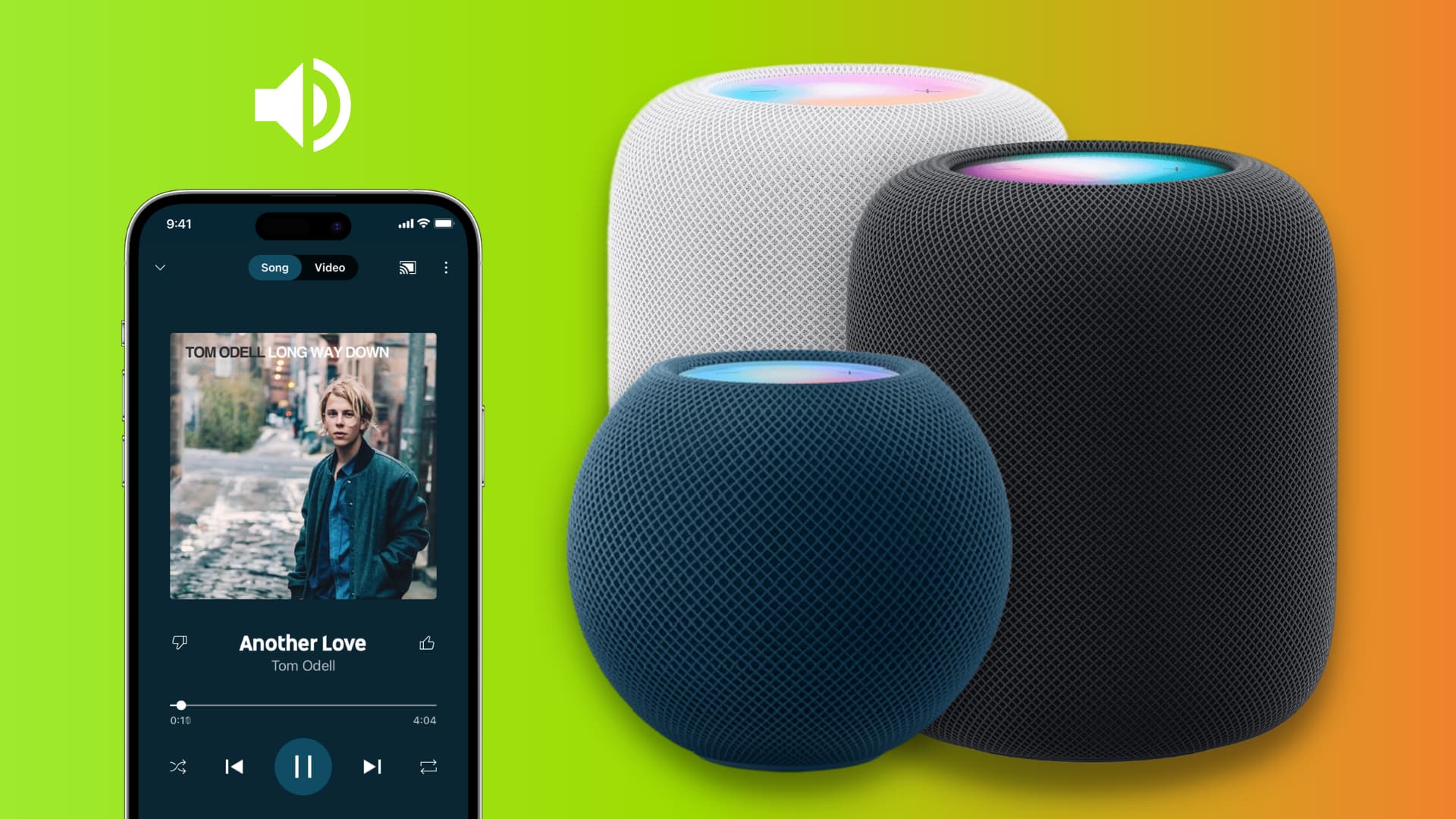
Selecting HomePod as the audio output
On iPhone or iPad
Open Control Center > tap the AirPlay icon and select your HomePod.
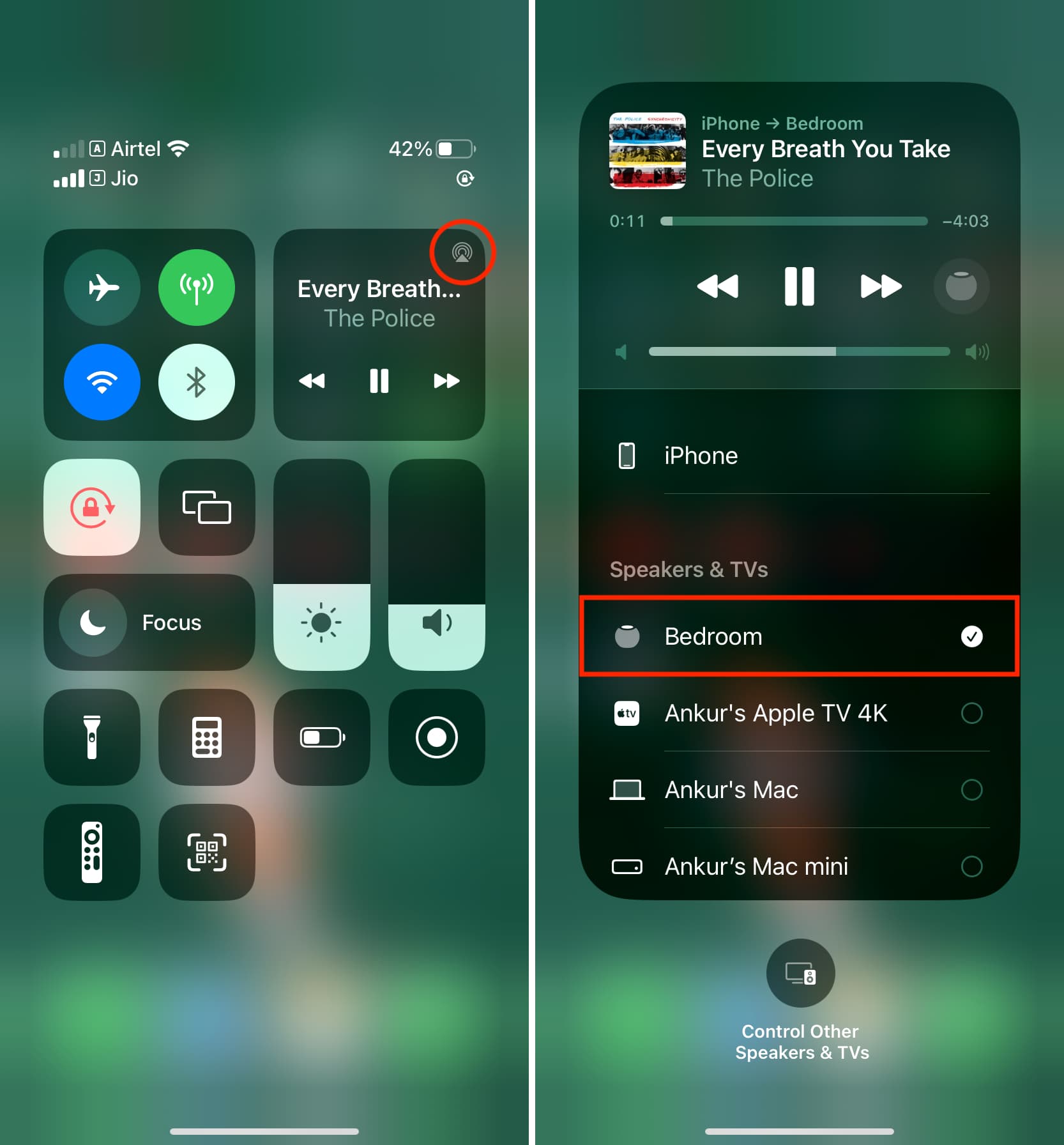
On Mac
Open the macOS Control Center, click the AirPlay icon next to the sound slider, and select your HomePod.
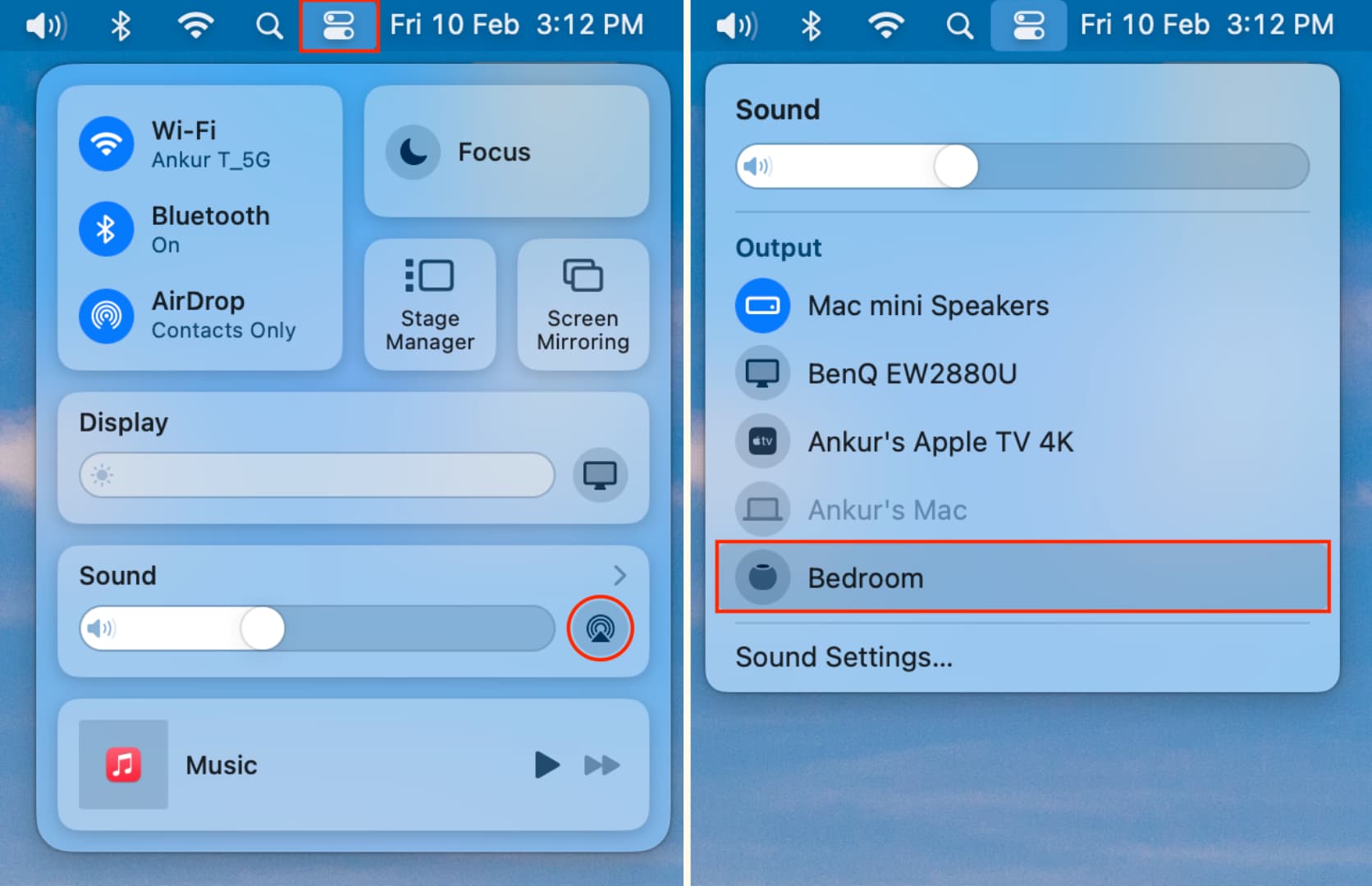
On Apple TV
Press and hold the TV button to open Control Center. From here, click the AirPlay icon and select your HomePod.
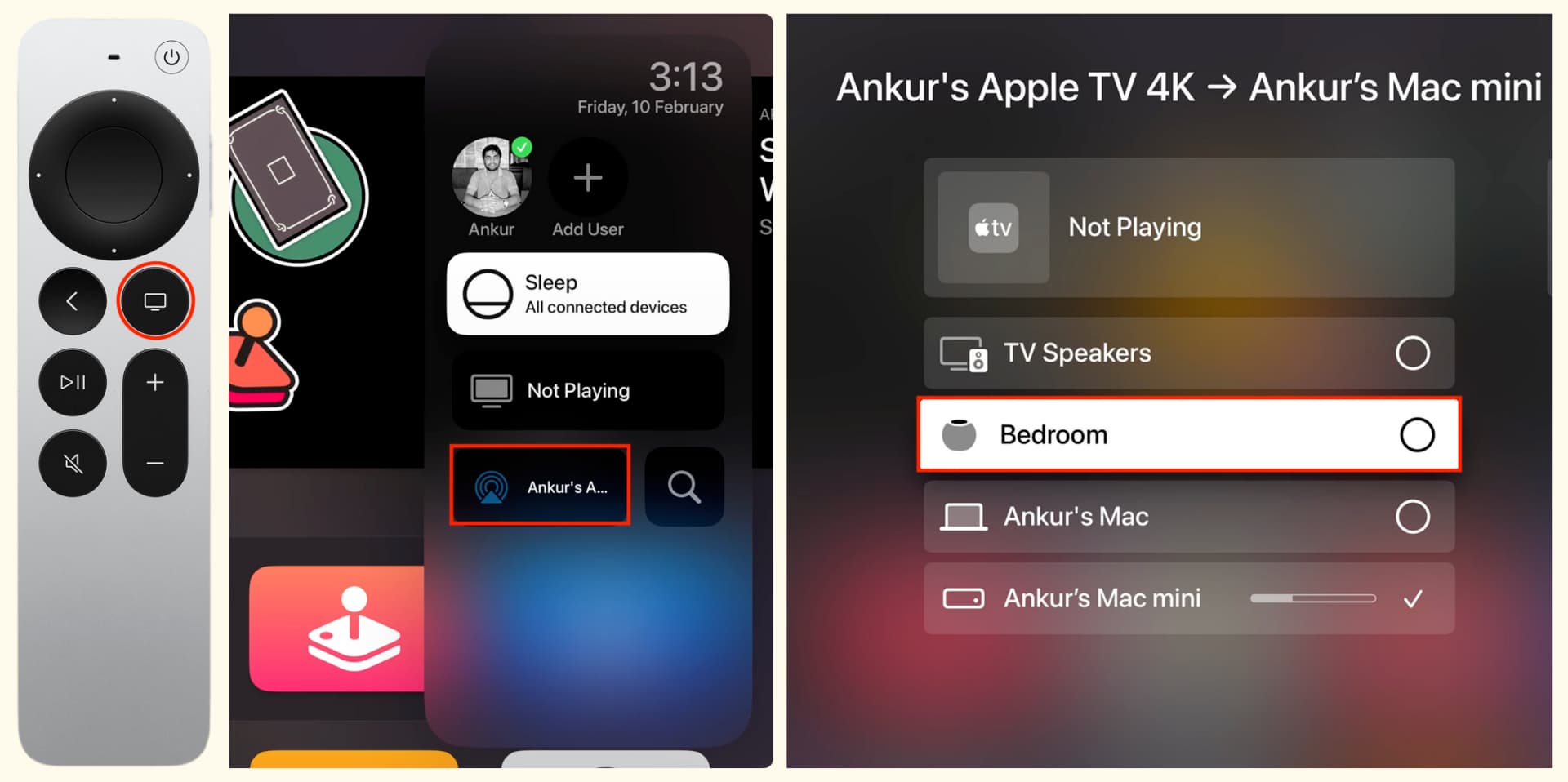
Fix issues when using HomePod as a speaker
At times, trying to select your HomePod as the audio destination may fail, and you will see an “AirPlay: Unable to connect” error on the screen. Other times, it may lead to no sound from either the HomePod or the built-in speaker on iPhone, iPad, or Mac.
Follow the solutions below if you’re facing the above issue or one similar to it. The fixes here work for all HomePod models, including HomePod 1st or 2nd generation or HomePod mini.
Stop using HomePod as your Apple TV speaker
When you set up your Apple TV or HomePod, you’re given a choice to use the HomePod as your Apple TV’s default audio output. If you choose to set your HomePod as your Apple TV speaker, you may not be able to select your HomePod as the AirPlay output on iPhone, iPad, and Mac if your Apple TV is switched off.
To fix this, simply switch on your Apple TV and then select your Apple TV name with tiny HomePod and TV icons.
If you don’t want your HomePod to piggyback on Apple TV, you have the option to remove your HomePod as Apple TV’s permanent audio destination. Here’s how to do that:
- Open Apple TV Settings and go to Video and Audio > Audio Output.
- From under the Default Audio Output heading, select TV Speakers or any other option except your HomePod.
- After this, your HomePod will appear as a separate AirPlay option in Control Center, and you can select it for audio output on your iPhone, iPad, or Mac, even when your Apple TV is turned off.
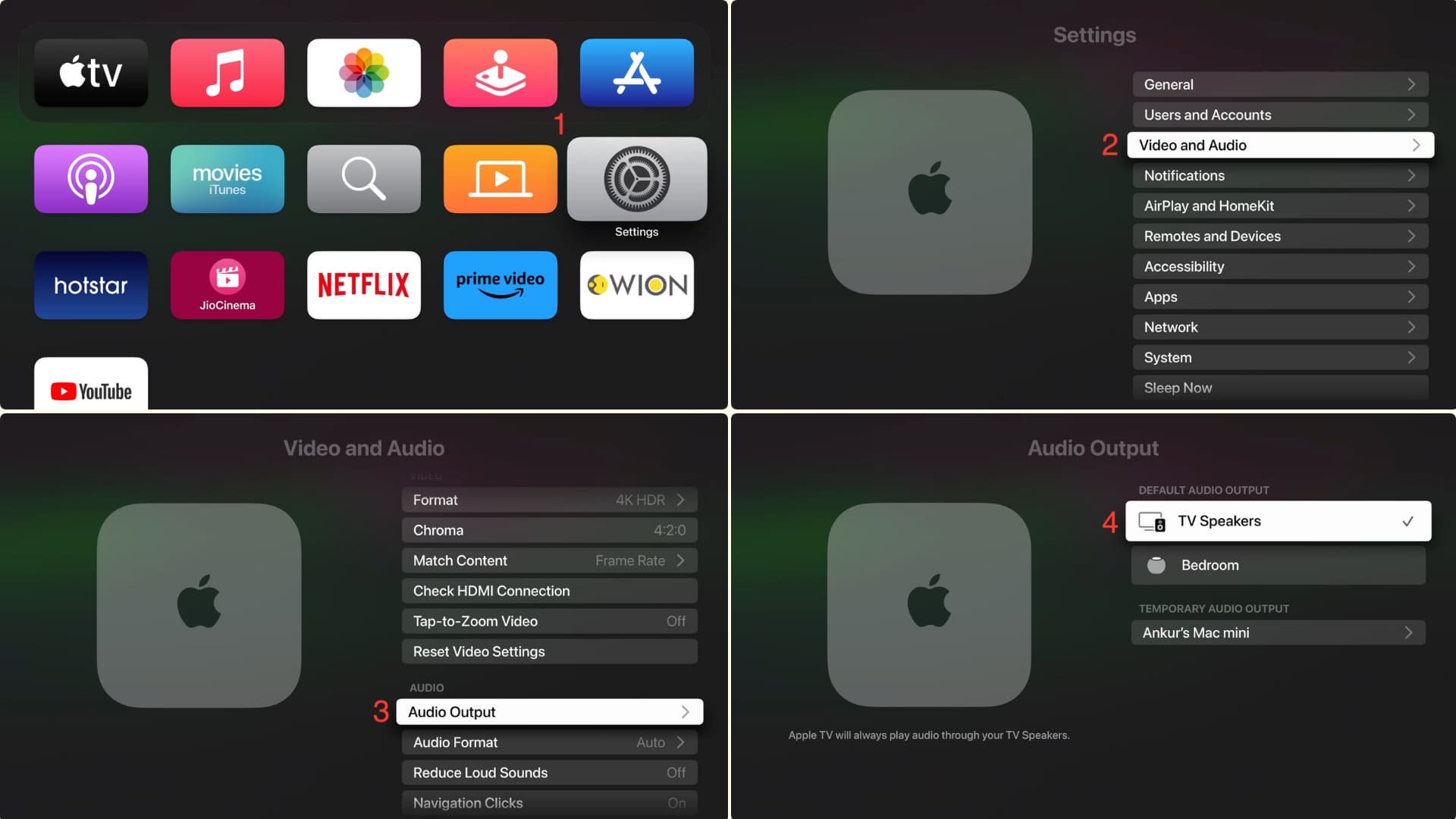
Make sure HomePod is switched on and not installing an update
Please check whether your HomePod is powered on. To confirm, touch its screen, and you should see it light up.
If you see a white light spinning on its screen, that means your HomePod is starting or updating its software. You will have to wait about 5 minutes until the update is installed.
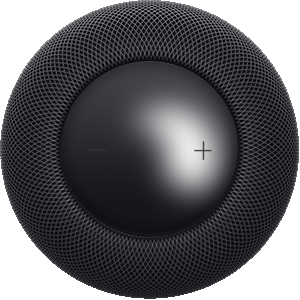
If there is a white light flashing, that means your HomePod is in trouble, and you will have to reset it to fix this issue. After that, you can select your HomePod as an audio output.
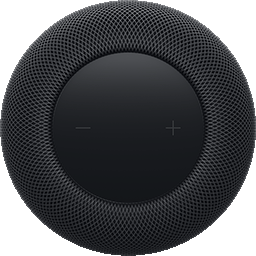
Select your HomePod again
If you can’t pick your HomePod as the speaker, try again a couple of times. First, select your device (iPhone, iPad, Mac) as the output, and once that’s successful, try choosing your HomePod again.
Restart your HomePod
Your HomePod is no stranger to temporary bugs and glitches that cause it to not work properly. To fix this, restart it using the wall outlet switch or open the Home app on your iPhone > select your HomePod > scroll down to the bottom and tap Reset HomePod > Restart HomePod.
After it restarts, you should be able to select it as the AirPlay audio destination from your iPhone, iPad, or Mac.
Restart your main devices
On rare occasions, the glitch may be from your iPhone, iPad, or Mac’s end, and to fix this, just turn them off and back on.
Update your HomePod
Open the Home app and install any pending HomePod updates. This should resolve your problems.
While you’re at it, make sure your main devices are also on the latest version of iOS, iPadOS, tvOS, or macOS.
Restart your Wi-Fi router
AirPlay works over your Wi-Fi network, so it would be a good idea to turn the router off and on again.
Reset iPhone or iPad network settings
If you still cannot use your HomePod as a speaker, go to iPhone Settings > General > Transfer or Reset iPhone > Reset and hit Reset Network Settings. After the reset completes, your iPhone or iPad should be able to connect to your HomePod and AirPlay audio to it.
Reset your HomePod
If none of the solutions work for you, this is the ultimate fix before taking your wireless speaker to an Apple Store for inspection.
When it comes to resetting your HomePod, you have three easy ways to do that. Resetting will erase all settings on your HomePod and make it new. Once the reset completes, set up your HomePod again, and it should start working perfectly as your audio output.
Take your HomePod to an Apple Store
Finally, if you could not address the problem on your own, get your HomePod inspected at an Apple Store or authorized Apple service center.
Check out next: